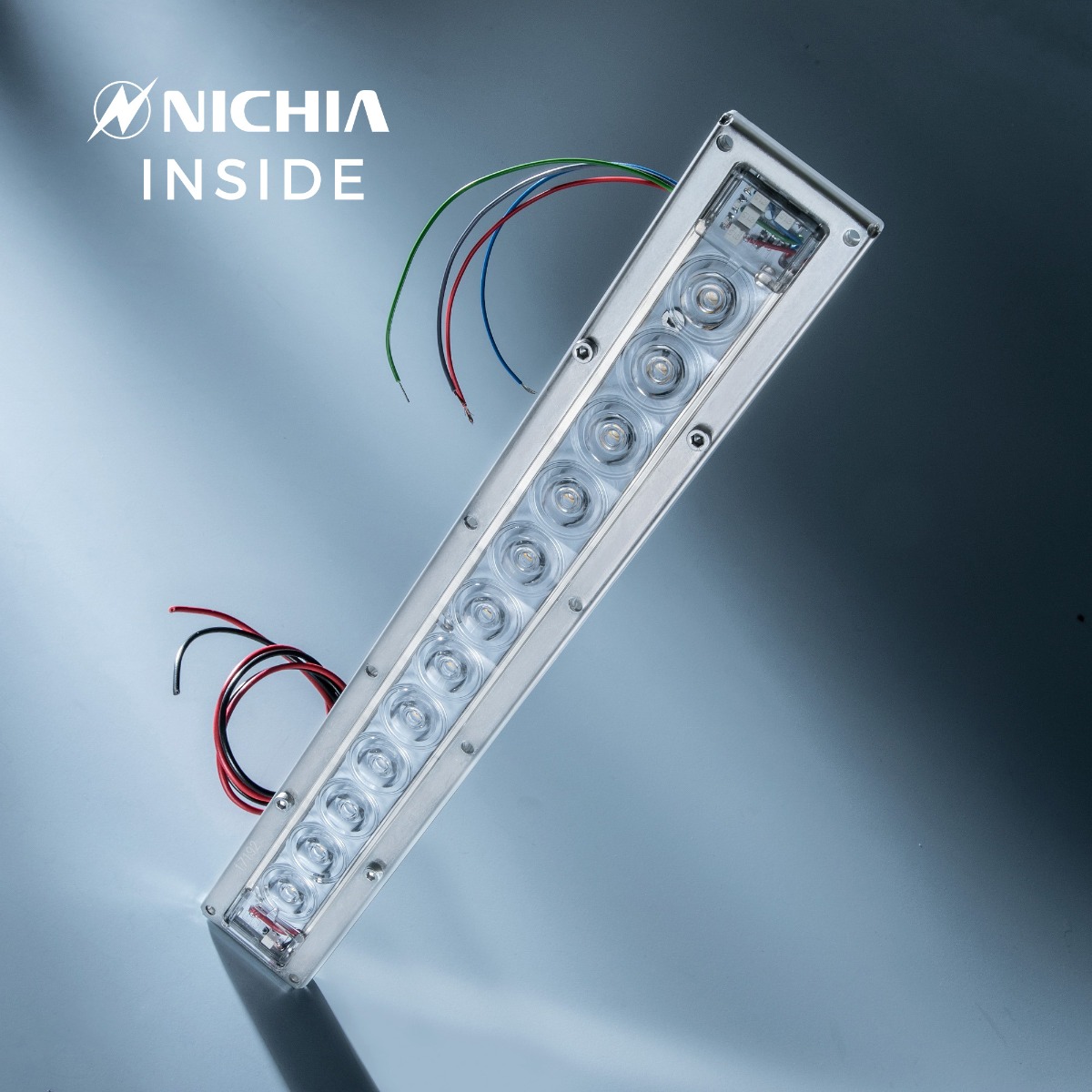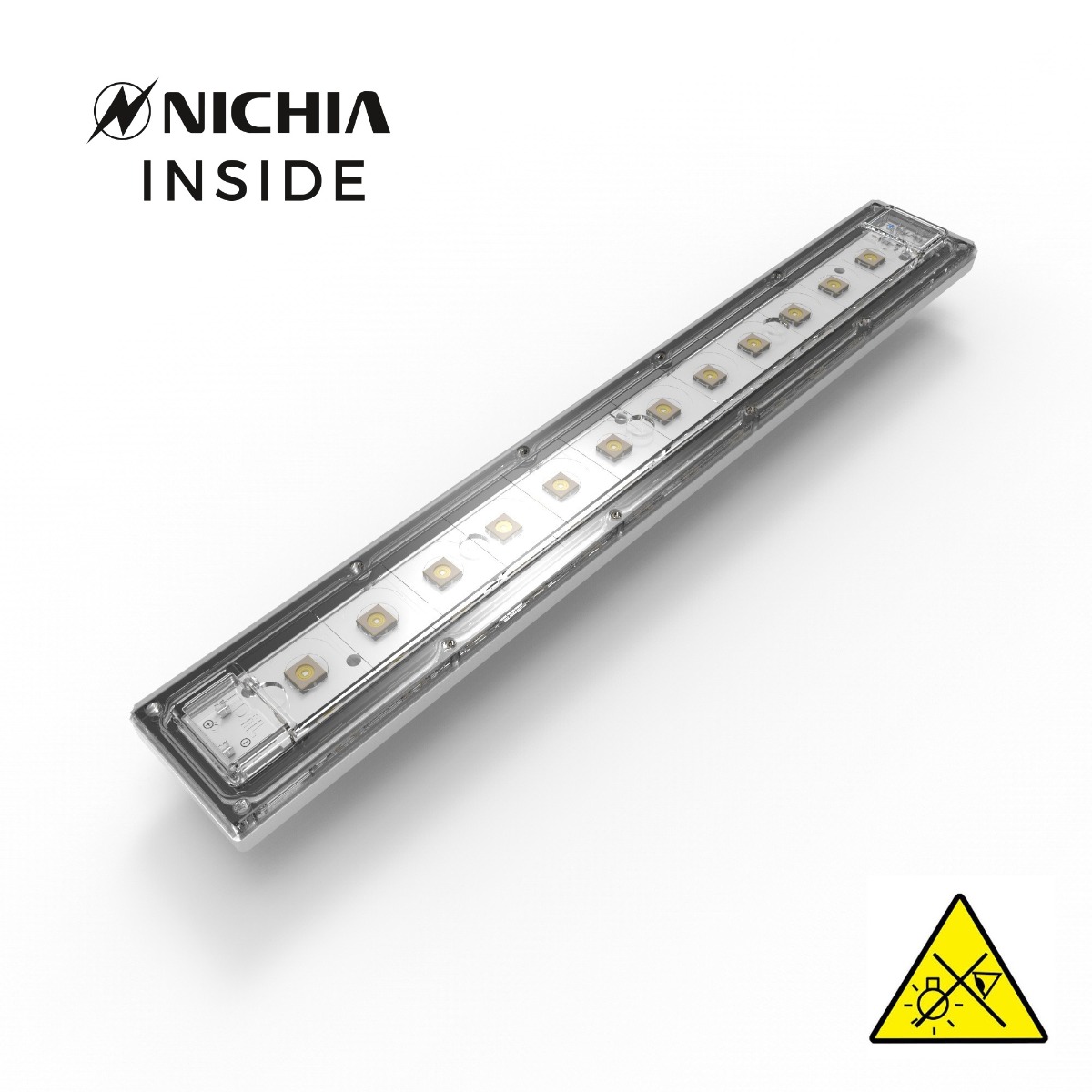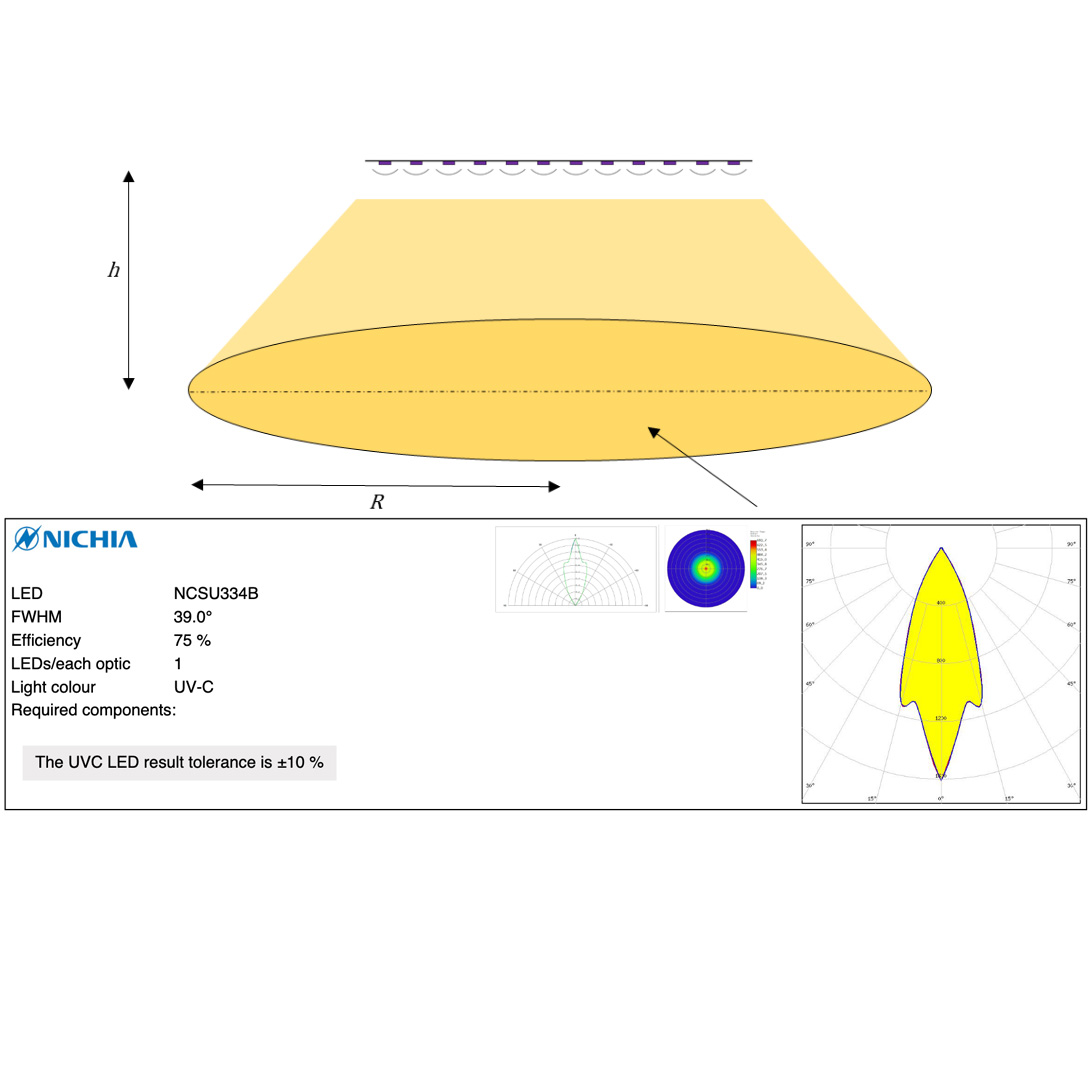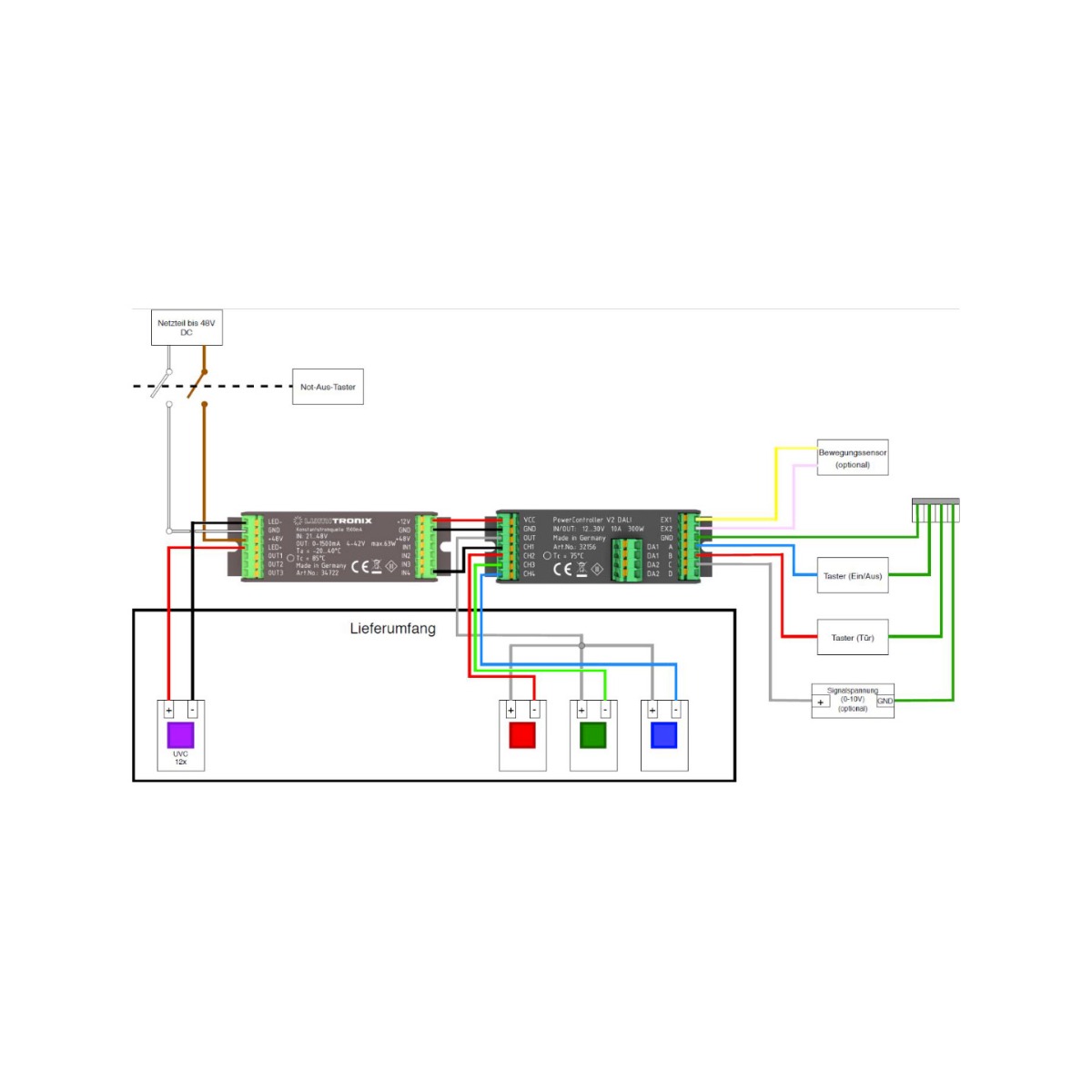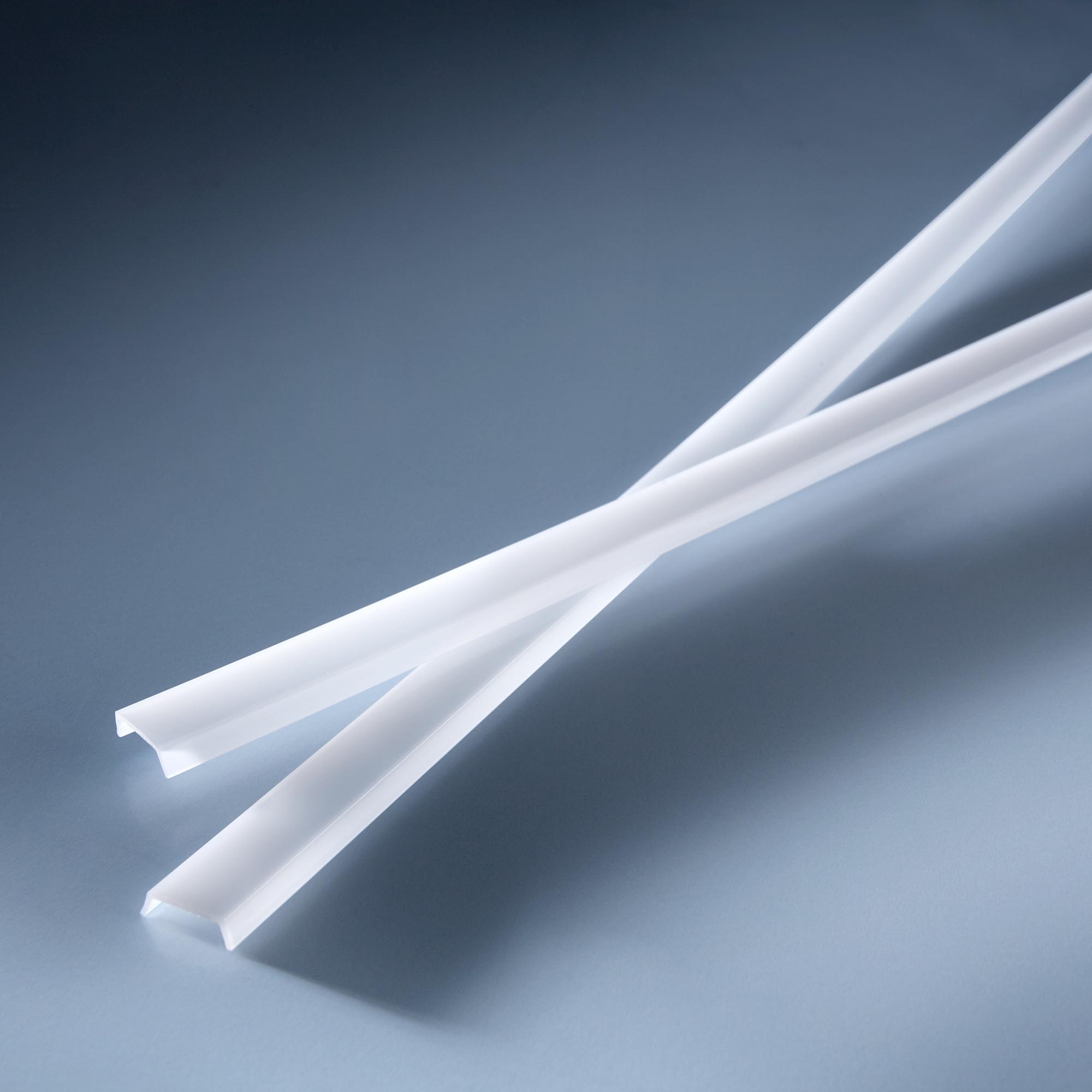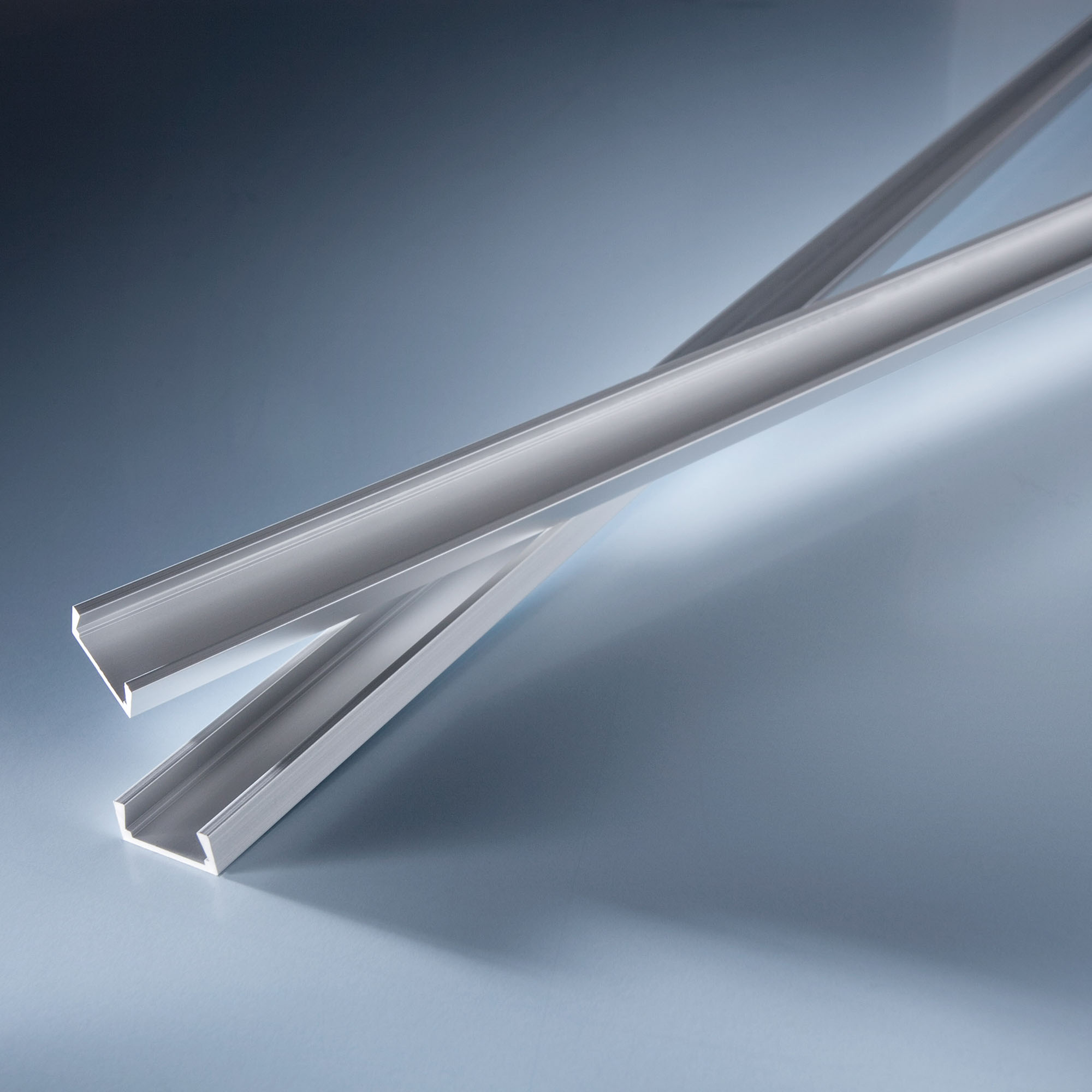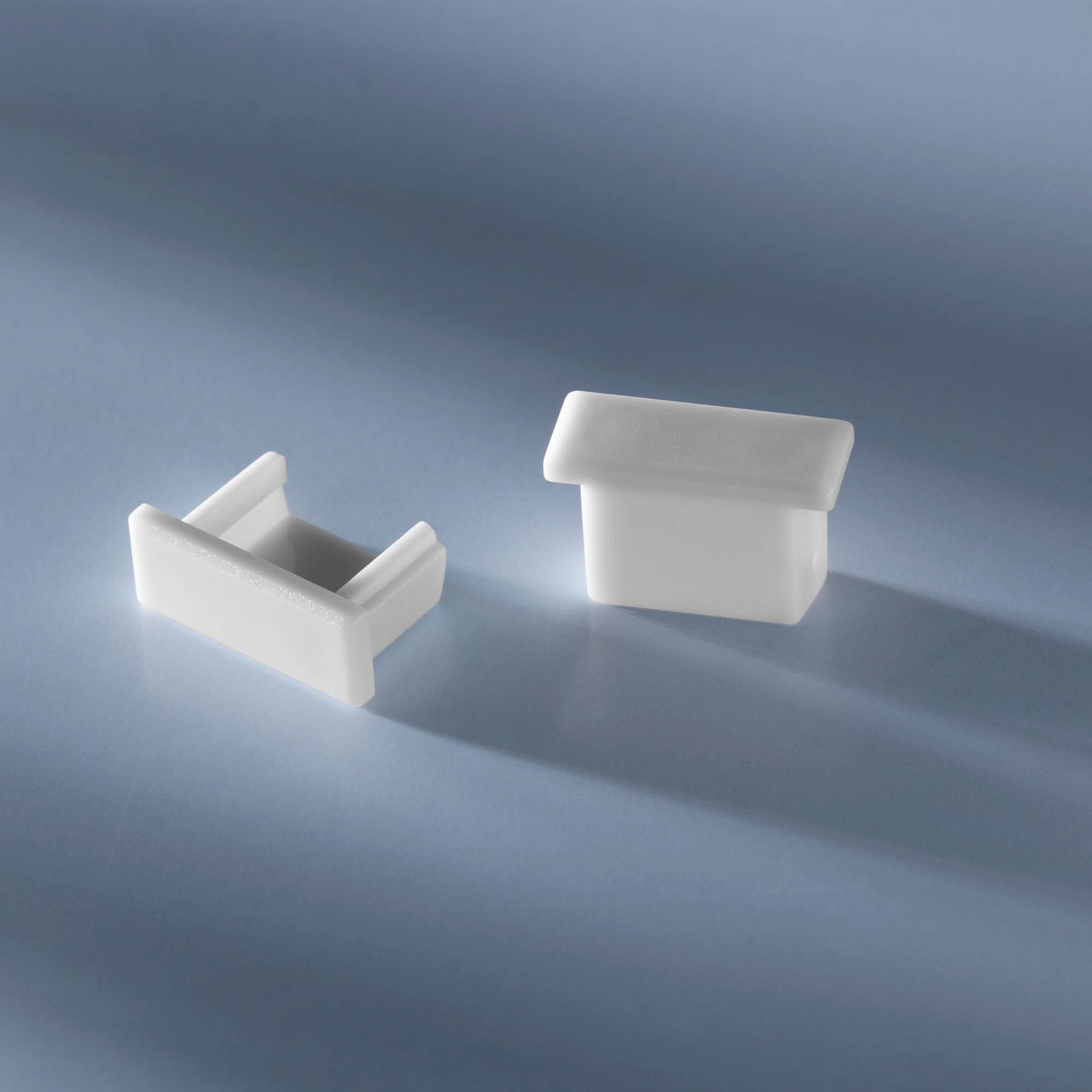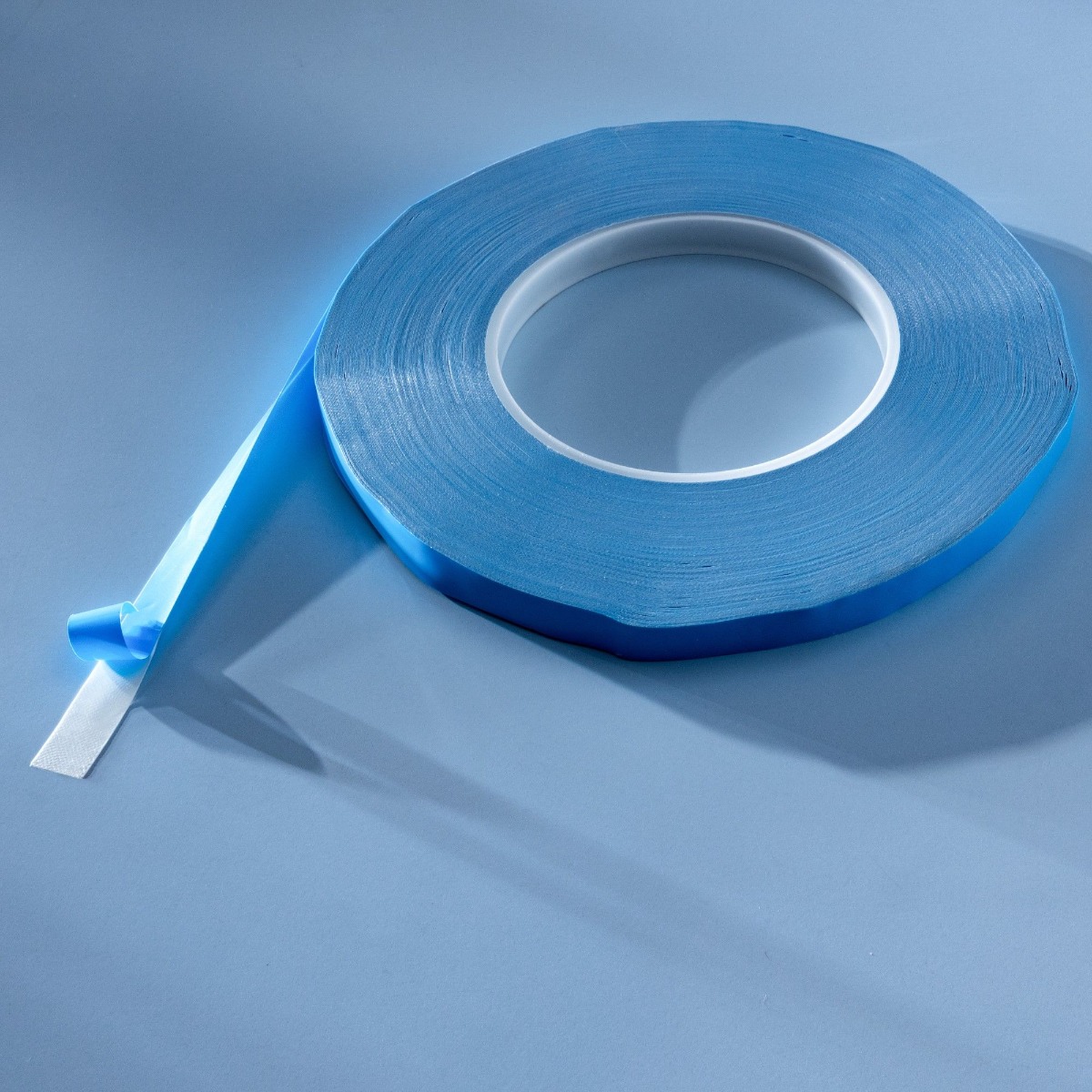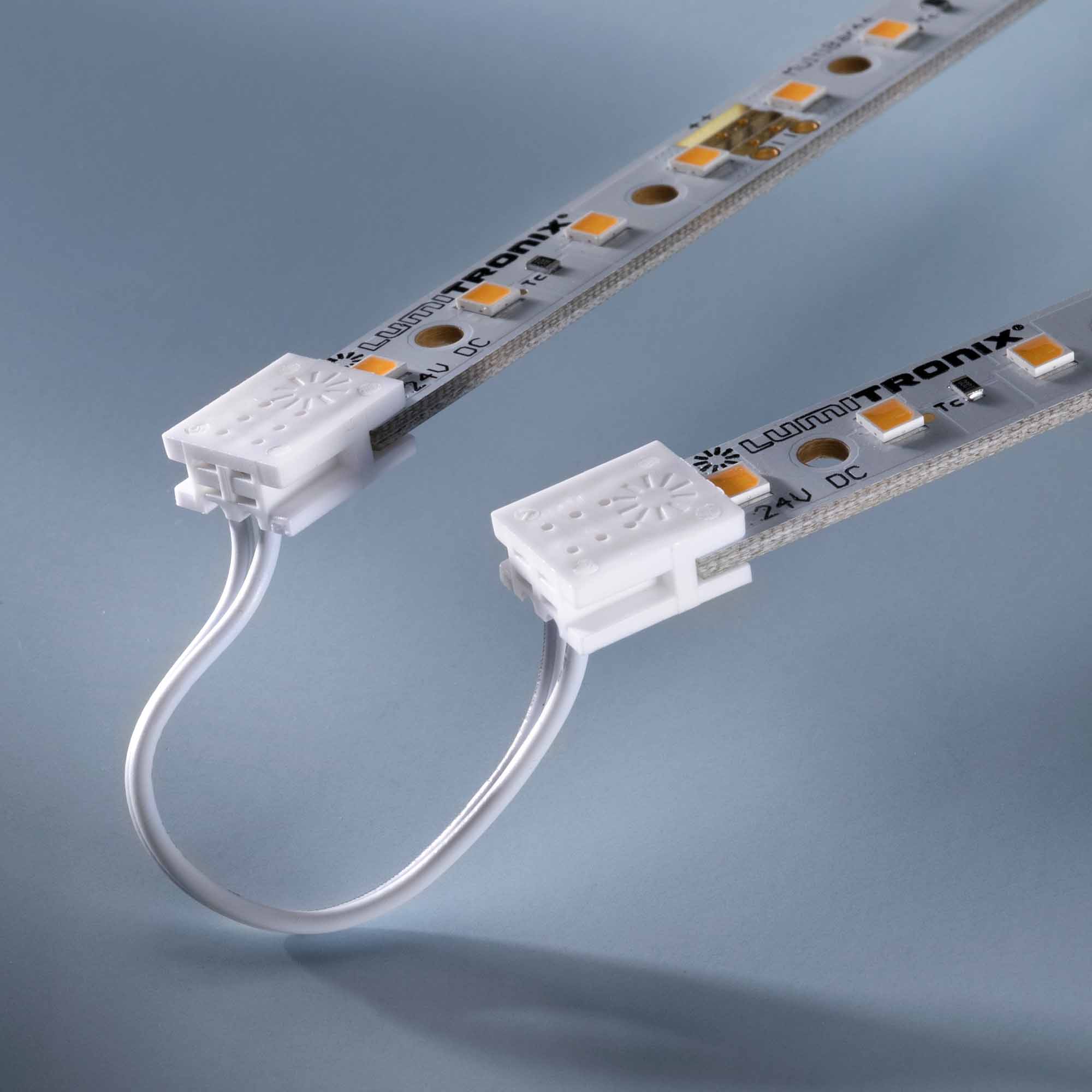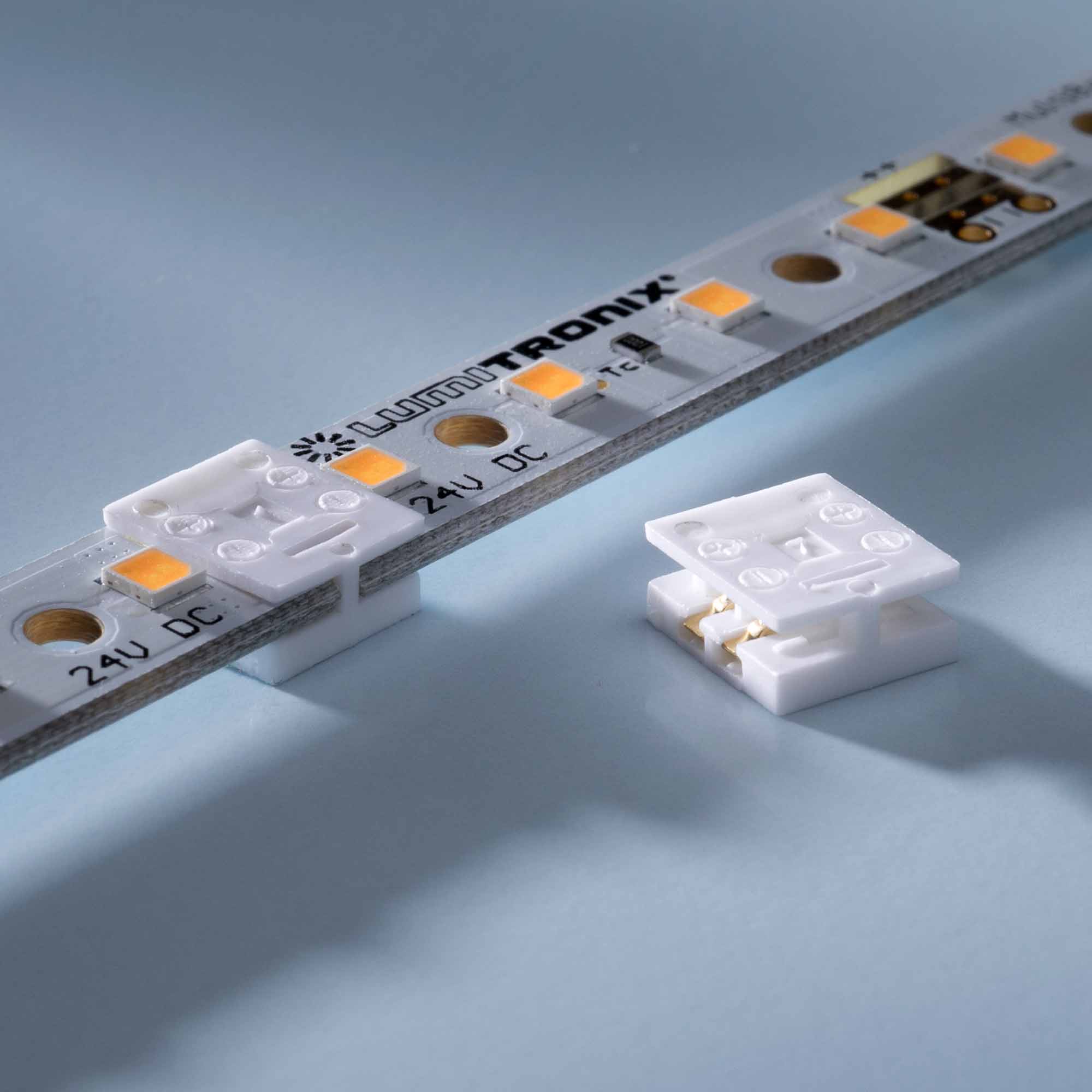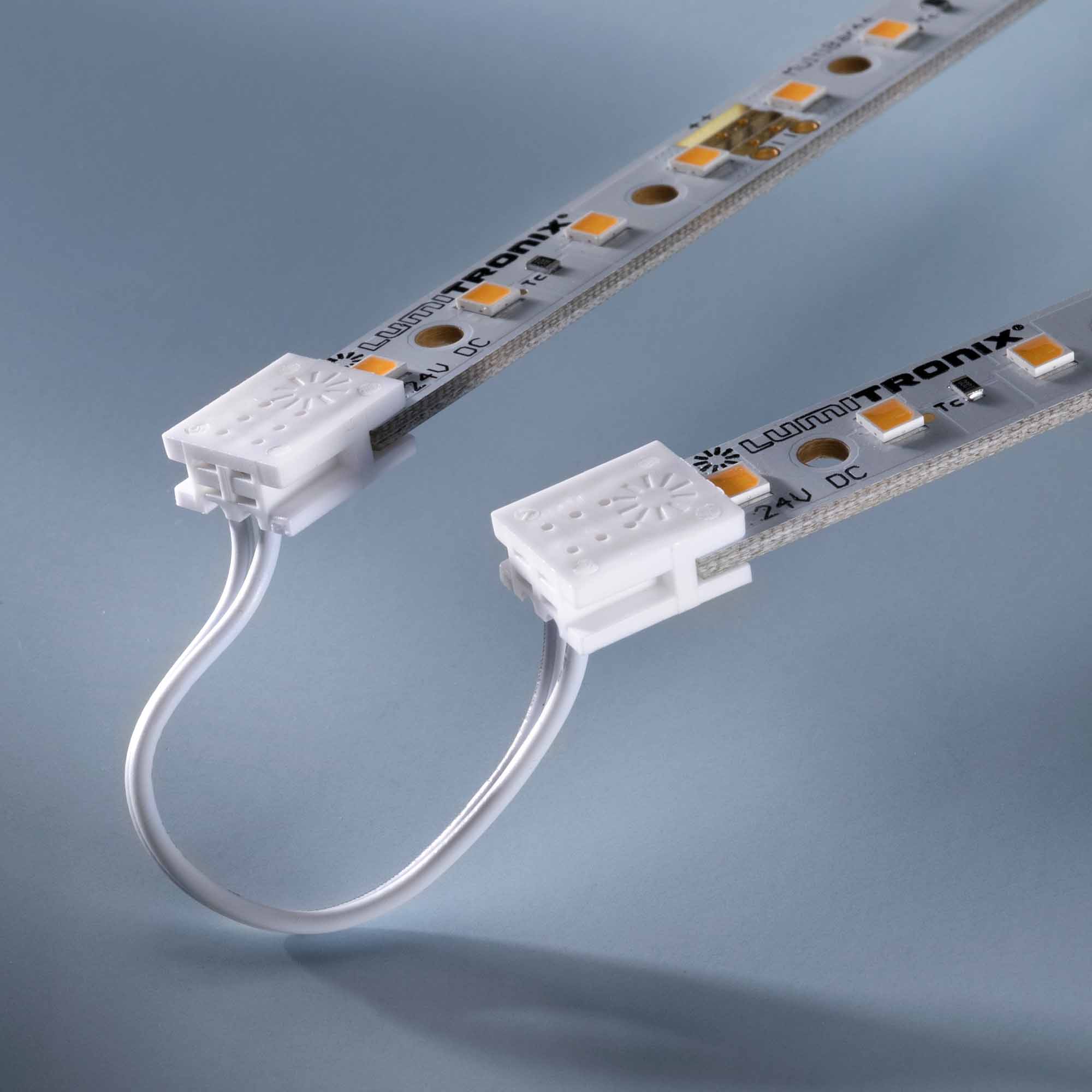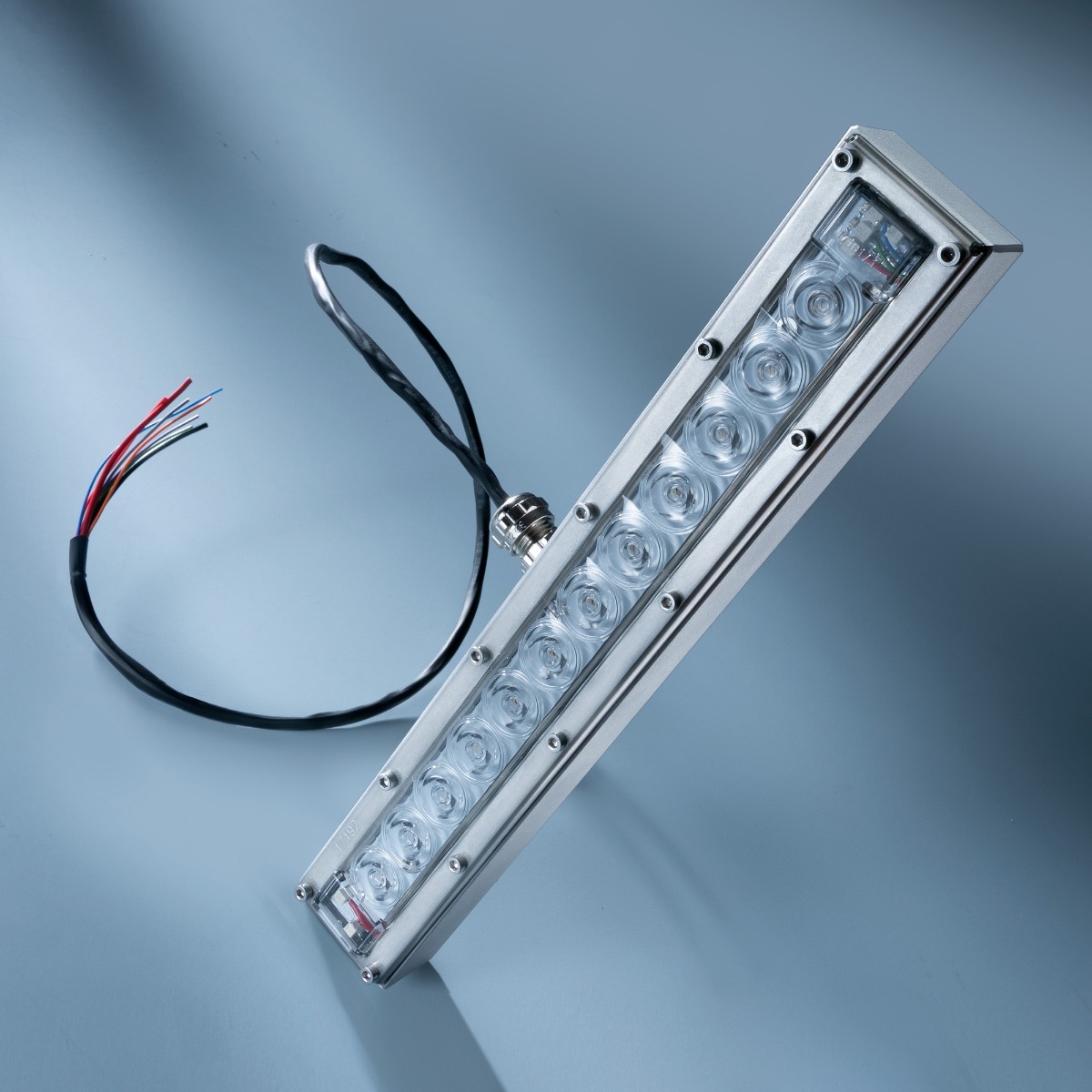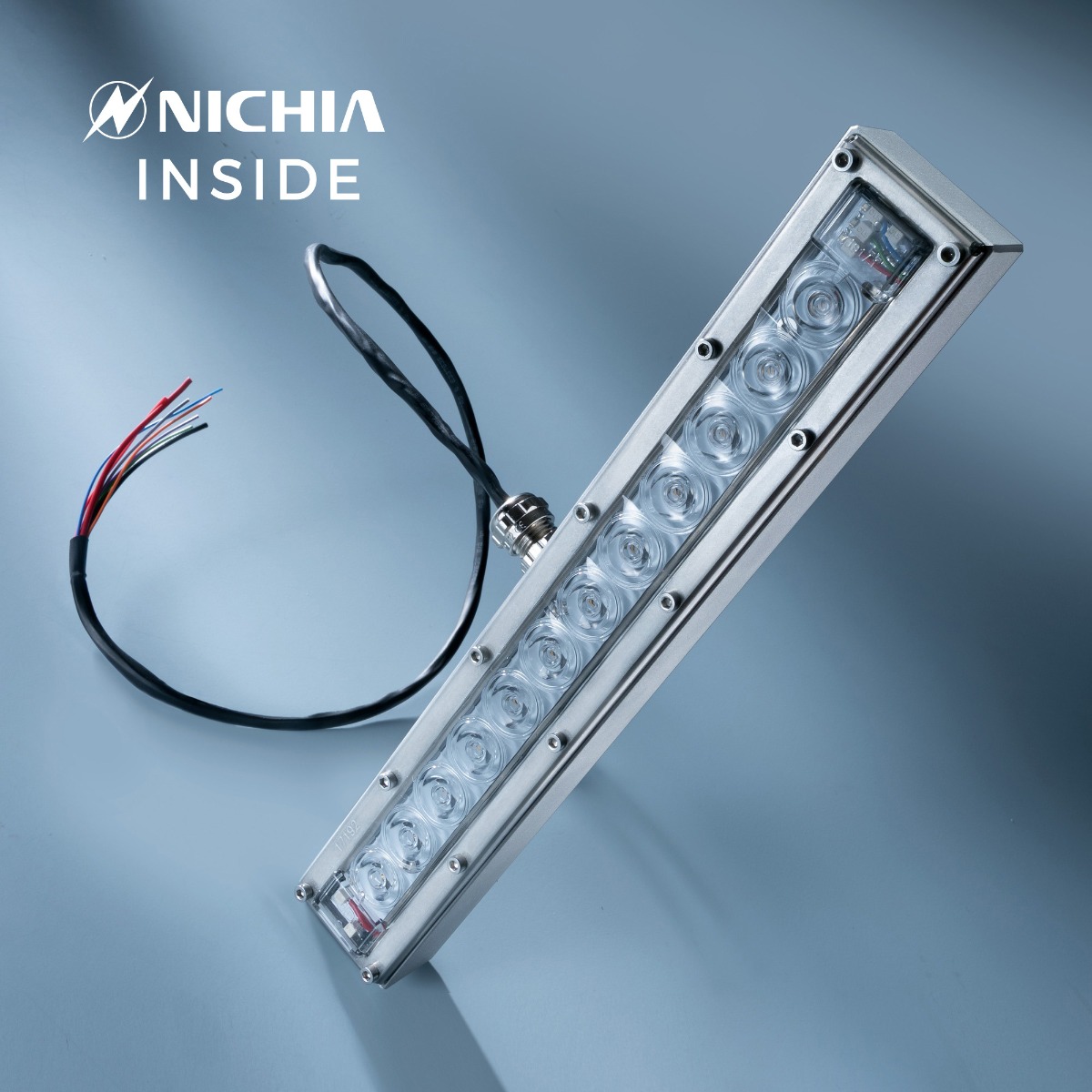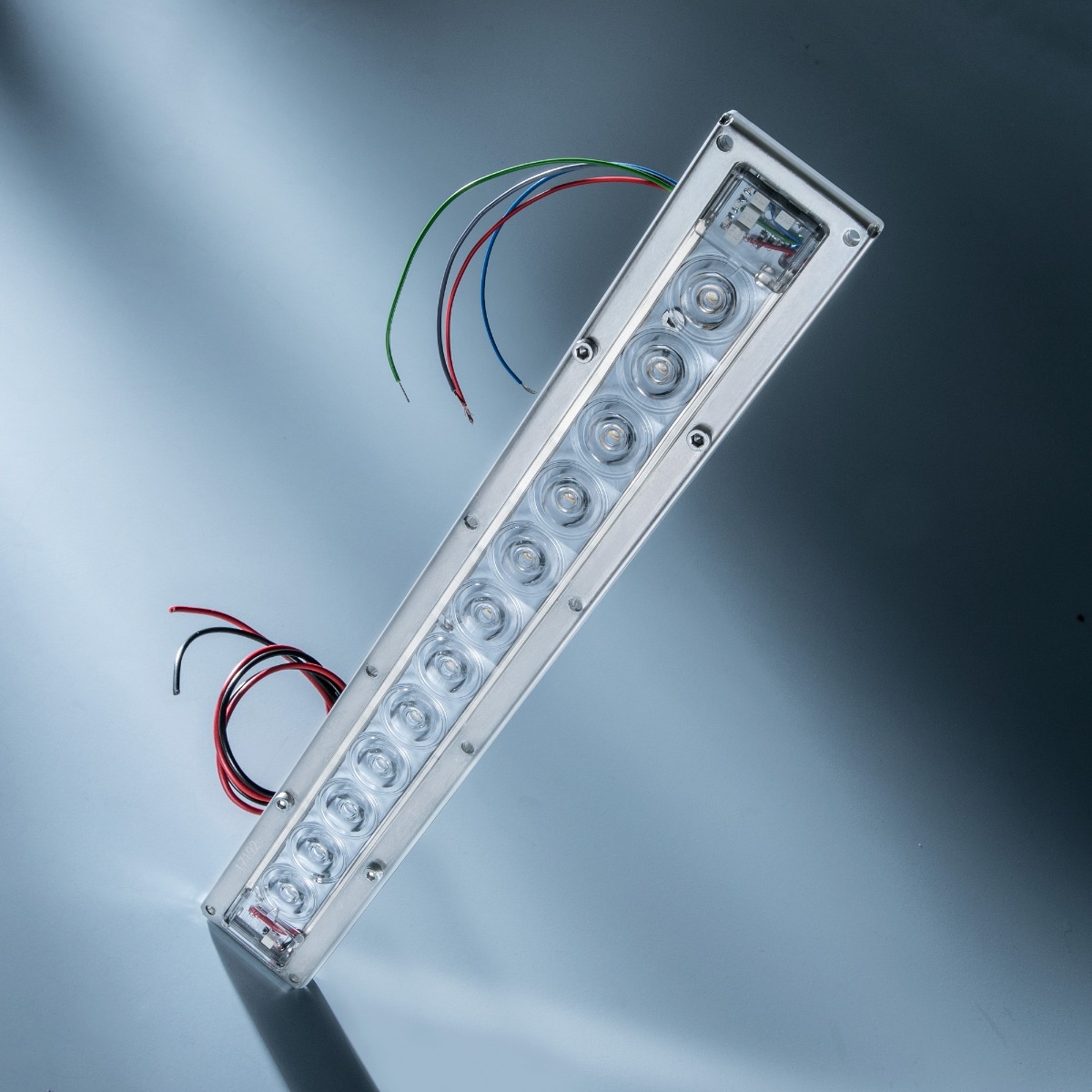Violet UVC Nichia LED Module 280nm 12 NCSU334B LEDs 882mW 29cm 1050mA IP67 for disinfection and sterilization
- Highly efficient solution for disinfection and decontamination, with a scientifically proven wavelength of 280nm for sterilization and cleaning of air, liquids, and surfaces
- Nichia LEDs' 882 mW UVC radiation intensity at 280nm greatly reduces the need for irradiation time for proper decontamination
- Uses 12 Nichia NCSU334B UV-C LEDs (280nm) with a UVC radiant flux of 882mW at 1500mA, and typical power consumption of 23.52W at 1050mA.
- UVC-rated lens for LEDIL, FN17294_VIOLET-12X1-S with a 39-degree wide beam for each LED, further enhancing the sterilization process
- Robust aluminum housing with a silicone clear lens and stainless steel metal frame, ingress protection class IP67, ensuring durability and longevity
- Easy to operate, with 3 signal LEDs (red, blue, and green) indicating the lamp's status: ready for operation, not usable, or in operation
- Suitable for use in the industrial sector, such as lighting manufacturers and companies in the medical technology sector, making it an ideal choice for professional applications.
The Violet UV-C LED module is a highly efficient disinfection lamp designed for professional applications. The UVC lamp features Nichia NCSU334B UV-C LEDs with a wavelength of 280 nm, scientifically proven to result in sterilization and cleaning of air, liquids, and surfaces. The LEDs offer a reliable and effective solution for killing/inactivating bacteria, germs, and viruses, including COVID-19.
In addition to their efficacy, the Nichia LEDs deliver a radiant flux of up to 882mW at 280nm, reducing the time required for proper decontamination significantly.
The product consists of a robust aluminum housing, a lens system made from silicone clear lens, and a stainless steel metal frame. It features an ingress protection class of IP67 and is fitted with three signal LEDs that indicate whether the lamp is ready for operation, not usable, or in operation.
The LED module has a typical power consumption of 23.52W at 1050mA and is operated with 1050mA or 1500mA constant current LED driver at 22-24V. The Mean Well LCM driver is recommended for simple dimming via 0-10V or DALI or the Powercontroller V2 series for more dimming options, including via wireless button or phone app.
The Violet UVC module is primarily designed for industrial sectors, such as lighting manufacturers and medical technology companies. The LED module can be used with the UVC rated lens for LEDIL, FN17294_VIOLET-12X1-S with 39 degrees wide beam for each LED.
The Violet UVC LED module is an excellent choice for professional users looking for an efficient solution for disinfection and decontamination. With its proven efficacy, high radiant flux, and durable construction, it delivers reliable and effective performance for a wide range of industrial applications.
Features:
- LED module with 12 Nichia NCSU334B UV-C LEDs (280 nm)
- UVC radiant flux 280nm: 882mW at 1500mA (23.5V), 630mW at 1050mA (22.4V)
- Uses UVC rated lens for LEDIL, FN17294_VIOLET-12X1-S with 39 degree wide beam for each LED (available separately under article number 36480)
- Typical power consumption 23.52W at 1050mA
- Lens system made from silicone clear lens and stainless steel metal frame, ingress protection class IP67
- UVC Module protection rating: IP67
- Robust aluminum housing
- 3 signal LEDs (red, blue and green) indicate whether the lamp is ready for operation, not usable or in operation
- Dimensions: 295x42x13.8 mm (LxWXH)
- The sterilization module is operated with 1050mA or 1500 mA constant current LED driver at 22-24V.
- We recommend the Mean Well LCM driver for simple dimming via 0-10V or DALI or our Powercontroler V2 series from more dimming options (including via wireless button or phone app).
The Violet UVC module has a radiant flux of 630 mW when operating at a typical current of 1050 mA, and 882 mW at a maximum current of 1500 mA. The table below illustrates the surface irradiance with varying distances.
|
Distance h [mm] |
Irradiation intensity E [mW/cm²] |
|
Simulation |
|
|
50 |
8.31 |
|
100 |
4.04 |
|
175 |
2.37 |
|
250 |
1.65 |
|
400 |
1.06 |
The following table* shows the irradiation time with a distance of 100 mm and an irradiation intensity of 4.04 mW/cm² on different microorganisms.
|
Microorganisms |
99.9% Dosage [mW * s cm²] |
Irradiation time |
Microorganisms |
99.9% Dosage [mW * s cm²] |
Irradiation time [s] |
|
|
Bacteria/ Viruses
|
Bakterium coli (in air) |
2.1 |
0.58 |
Proteus vulgaris |
7.8 |
2.16 |
|
Bakterium coli (in water) |
16.2
|
4.48 |
Pseudomonas aeruginosa |
16.5 |
4.59 |
|
|
Bacillus antharacis |
13.7 |
3.80 |
Pseudomonas fluorescens |
10.5 |
2.91 |
|
|
S. enteritidis |
12 |
3.33 |
S. tyyphimurium |
24 |
6.65 |
|
|
B. megatherium (veg.) |
3.4 |
0.94 |
Sarcina lutea |
59 |
16.35 |
|
|
B. megatherium sp. |
8 |
2.22 |
Serratia marcescens |
7.2 |
2 |
|
|
B. paratyphosus |
9.6 |
2.67 |
Dysentery bacilli |
6.6 |
1.83 |
|
|
13, prodiglosus |
2.1 |
0.58 |
Shigella paradysenteriae |
5.2 |
1.45 |
|
|
B. pyocyaneus |
13.2 |
3.66 |
Spirillum rubrurn |
13 |
3.61 |
|
|
B. subtilis spores |
36 |
9.98 |
Staphylococcus albus |
5.4 - 10 |
1.5 - 2.78 |
|
|
Cornynebacterium diphteriae |
10 |
2.78 |
Staphylococcus aureus |
6.6 - 14.8 |
1.84 - 5.07 |
|
|
Eberthella typhosa |
6.3 |
1.75 |
Streptococcus hemolyticus |
6.6 |
1.84 |
|
|
Escherichia coli |
9 |
2.50 |
Streptococcus lactis |
18 |
5 |
|
|
Legionella pneumophila |
2.76 |
0.76 |
Streptococcus viridans |
6 |
1.67 |
|
|
Micrococcus candidus |
19 |
5.27 |
Baccillus tuberculi |
30 |
8.32 |
|
|
Micrococcus piltonensis |
24 |
6.65 |
Trichonomas |
300 |
83.17 |
|
|
Micrococcus sphaeroides |
30 |
8.32 |
Poliovirus |
9.6 |
2.67 |
|
|
Neisseria catarrhalls |
13 |
3.61 |
Infectus Hepatitis |
17.4 |
4.83 |
|
|
Phytomonas tumefaciens |
13 |
3.61 |
Influenza |
10.2 |
2.83 |
|
|
-- |
- |
- |
Tobaco mosaic |
720 |
199.61 |
|
|
Yeasts |
Baker's yeast |
11.7 |
3.25 |
Saccharomyces spores |
24 |
6.65 |
|
Ale yeast |
9.9 |
2.75 |
Saccharomyces cerevisae |
186 |
51.57 |
|
|
Common baker's yeast |
18 |
5 |
Saccharomyces turpidans |
27 |
7.48 |
|
|
Saccharomyces ellipsoideus |
18 |
5 |
Torula sphaerica |
6.9 |
1.92 |
|
|
Moulds |
Aspergillus amstelodami |
200.1 |
55.48 |
Oospara lactis |
15 |
4.16 |
|
Aspergillus flavus |
180 |
49.90 |
Penicillium digitatum |
132 |
36.59 |
|
|
Aspergillus glaucus |
132 |
36.59 |
Penicillium expansum |
39 |
10.81 |
|
|
Aspergillus niger (Bakery) |
396 |
109.78 |
Penicillium chrysogenum (Fruits) |
150 |
41.59 |
|
|
Cladosporium herbarum |
180 |
49.90 |
Penicillium roqueforti |
39 |
10.81 |
|
|
Mucur mucedol |
195 |
54.06 |
Rhizopus nigricans (Bread) |
333 |
92.32 |
|
|
Mucor racemodus A |
51 |
14.14 |
Scopulariopsis brevicaulis (Cheese, etc.) |
240 |
66.54 |
|
|
Mucor racemodus B |
51 |
14.14 |
- |
- |
- |
|
|
Algae |
Diatomeen |
1080 - 1800 |
299.41 – 499.01 |
Blue algae |
1080 - 1800 |
299.41 – 499.01 |
|
Green algae |
1080 - 1800 |
299.41 – 499.01 |
- |
- |
- |
|
|
Protozoa |
Paramecium |
192 - 300 |
53.23 – 102.68 |
- |
- |
- |
* The dosage stated in the table refers to a wavelength of 254 nm. The irradiation time was converted to the wavelength of this UVC module (275 nm) taking into account the spectrum (according to the Spectral Germicidal Efficacy DIN 5031-10 (E. Coli) standard).
Note: This product is intended exclusively for customers who are trained in the use of UVC radiation and can ensure hazard-free use. Do you have further questions concerning this product or the topic UVC? Please send an e-mail to [email protected]
Warnings
- The article is a powerful UVC module which can be used for the disinfection of surfaces. It emits at a wavelength of 280 nm which is not visible to the human eye.
- It is imperative to ensure that users wear suitable protective clothing against UV radiation at all times. All skin and eye contact must be avoided.
- We recommend the use of the following protective agents:
- Safety goggles
- Gloves
- Face Shield
- Protective clothing that shields UV light from the skin
- Wear protective clothing at all times during use and ensure that no other persons are within reach of the radiation source without taking appropriate safety precautions.
- Light can reflect, therefore special precautions have to be taken with reflecting surfaces (e.g. mirrors).
- If skin tissue is exposed to the light source, skin irritation comparable to sunburn may occur. If necessary, treat the affected areas with a suitable cream or consult a physician.
- Low wavelength UV light can cause permanent damage to the retina in severe cases. Make sure to wear protective goggles at all times when using the device.
| SKU | 37200 |
|---|---|
| Weight brut (g) | 275.000000 |
| Color | UVC Ultraviolet |
| Power (W) | 24 |
| Warranty (months) | 24 |
| Forward Current Max | 1500mA |
| Wavelength (nm) | 280 |
| Manufacturer Product Code | 37200 UV-C |
| Strip Type | Rigid |
| LEDs number per sales unit | 12 |
| Dimensions | 295x42x13.8 |
| Dimensions: Length (cm) | 29.5 |
| Dimensions: Width (mm) | 42 |
| Dimensions: Height (mm) | 13.8 |
| Brand | Lumistrips |
| Manufacturer Part Number | 37200-UV-C |
| Forward Voltage Typ (V) | 23 |
| Availability beyond shown stock: | YES |

